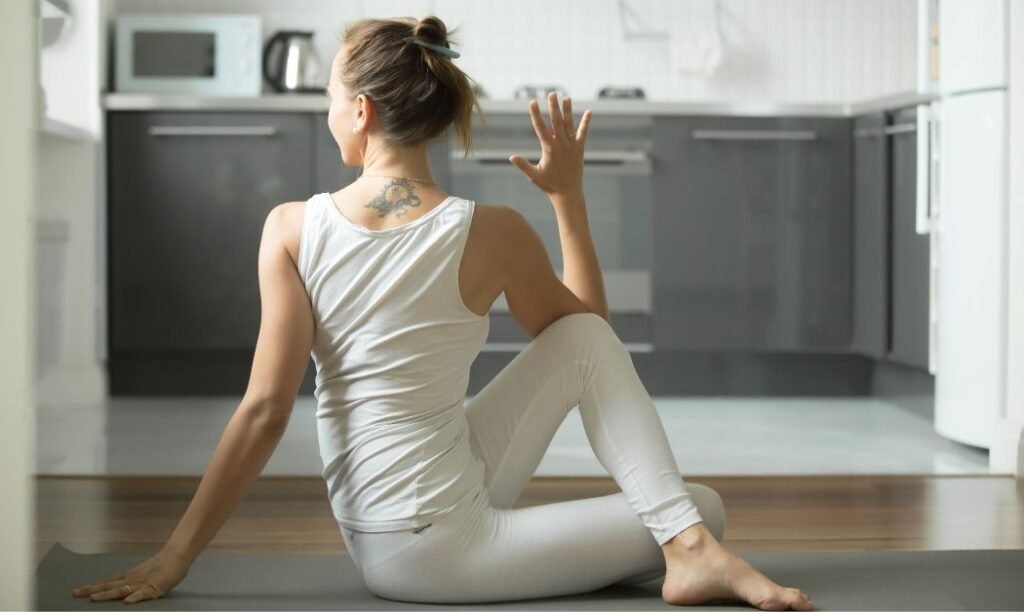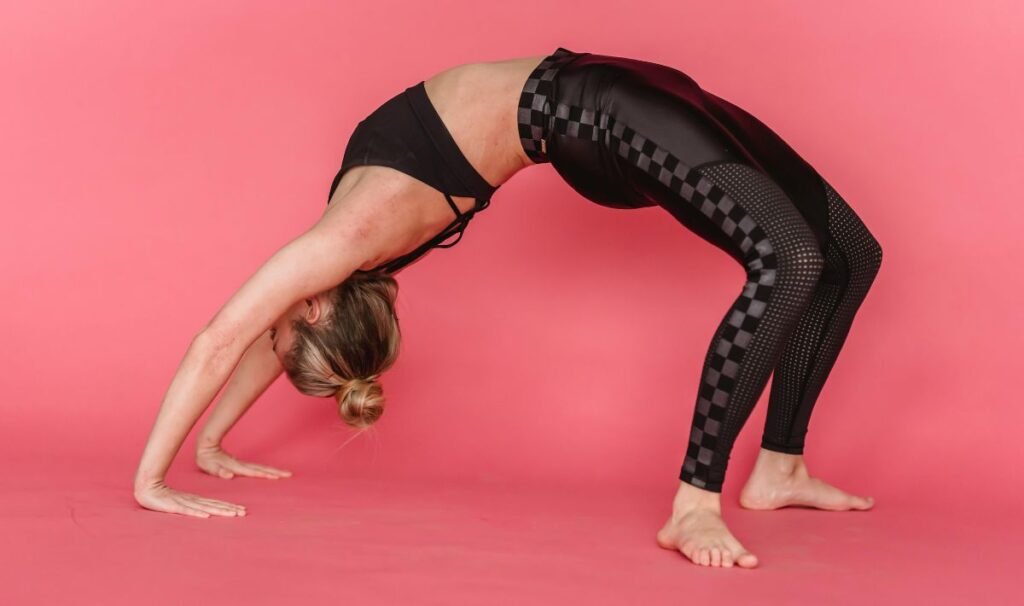When it comes to yoga, there are few poses as elegant and empowering as the One-Legged King Pigeon Pose, also known as Eka Pada Rajakapotasana. This advanced pigeon pose not only challenges your flexibility but also strengthens your determination. Whether you’re seeking physical growth, mental clarity, or simply a moment of peace, this pose has a lot to offer. In this guide, we’ll dive deep into the steps, tips, and benefits of mastering Eka Pada Rajakapotasana, along with some practical advice to help you succeed.
What is the One-Legged King Pigeon Pose?
Eka Pada Rajakapotasana translates to “One-Legged King Pigeon Pose” in Sanskrit. It’s a yoga pose that blends flexibility, balance, and strength. This pose involves bending one leg forward while the other stretches back, with the ultimate goal of reaching your hands toward your back foot to form an elegant arch. It’s a pose that combines a deep hip opening with an impressive backbend, making it a favorite among advanced yoga practitioners.
While it’s beautiful, this pose is not just for show. It provides a wealth of physical and mental benefits that we’ll explore in detail.
Why Practice the Advanced Pigeon Pose?
The One-Legged King Pigeon Pose is a pose of transformation. It may look intimidating at first, but with practice and patience, it can:
- Enhance flexibility: This pose stretches the hip flexors, quads, and spine.
- Build strength: It strengthens the legs, back, and core muscles.
- Improve posture: Opening the chest and shoulders encourages a taller, more confident stance.
- Reduce stress: The deep stretch can release tension held in the hips, which are known to store emotional stress.
- Boost focus: Balancing in this pose requires concentration, helping you cultivate mindfulness.
Let’s break it down step by step so you can start your journey toward mastering Eka Pada Rajakapotasana.
Step-by-Step Guide to One-Legged King Pigeon Pose
Step 1: Warm-Up
Before attempting this advanced pigeon pose, it’s crucial to warm up your body. Focus on poses that loosen the hips, spine, and shoulders. Here are a few recommended warm-ups:
- Cat-Cow Stretch (Marjaryasana-Bitilasana): Mobilizes the spine and warms the back.
- Low Lunge (Anjaneyasana): Opens the hip flexors and quads.
- Downward-Facing Dog (Adho Mukha Svanasana): Stretches the hamstrings and calves.
- Reclined Pigeon Pose (Supta Kapotasana): Prepares the hips for deeper stretches.
Step 2: Enter the Base Position
- Begin in a tabletop position on your hands and knees.
- Bring your right knee forward, placing it behind your right wrist. Your right ankle should rest near your left hip.
- Stretch your left leg straight back, keeping your toes pointing down and your hips squared.
- Slowly lower your torso, resting your hands on the mat for support.
Step 3: Deepen the Stretch
- With your hips square, lift your torso upright.
- Bend your left knee, bringing your left foot toward your back.
- Reach your left hand toward your foot. If this feels accessible, reach your right hand back to clasp your left foot.
Step 4: Achieve the Full Pose
- Once you’ve grabbed your foot, gently guide it closer to your head.
- Tilt your head slightly back and aim to touch your foot with the crown of your head.
- Keep your chest open and your shoulders relaxed.
- Hold the pose for 5-10 breaths, then slowly release.
Step 5: Repeat on the Other Side
Yoga is all about balance, so make sure to repeat the pose on the opposite side.
Readmore: Tips for Building a Supportive Yoga Community
Readmore: Top 5 Yoga Festivals You Should Attend This Year
Tips for Practicing Eka Pada Rajakapotasana
Mastering the One-Legged King Pigeon Pose takes time and patience. Here are some practical tips to help you along the way:
- Focus on alignment: Squared hips are key to protecting your lower back and knees.
- Use props: A yoga block or bolster under your hip can provide support while you build flexibility.
- Engage your core: This helps stabilize your body and prevents unnecessary strain.
- Don’t force it: Yoga is a journey, not a competition. Respect your body’s limits.
- Breathe deeply: Deep, steady breaths will help you relax into the pose.
- Practice regularly: Consistent practice is essential for improving flexibility and strength.
Common Mistakes to Avoid
- Hips out of alignment: Keep your hips squared to the front of the mat.
- Collapsed chest: Maintain an open chest and avoid rounding your shoulders.
- Overarching the lower back: Engage your core to protect your spine.
- Skipping warm-ups: This increases the risk of injury, especially in a pose that demands so much flexibility.
Benefits of the Advanced Pigeon Pose
Physical Benefits
- Hip Opener: Relieves tightness in the hips and increases mobility.
- Spinal Flexibility: Promotes a healthy, supple spine.
- Strengthens Core and Back: Supports better posture and stability.
- Improves Digestion: The gentle compression can stimulate digestive organs.
Mental and Emotional Benefits
- Stress Relief: Releases tension stored in the hips, which can be an emotional release.
- Enhanced Focus: Balancing in the pose helps improve concentration.
- Inner Peace: The deep stretch can lead to a sense of calm and mindfulness.
Related Article: Master Flying Pigeon Pose: Steps, Benefits & Tips
Related Article: Figure-4 Stretch Poses Guide
Variations and Modifications
If the full One-Legged King Pigeon Pose feels out of reach, don’t worry. Here are some variations to try:
- Reclined Pigeon Pose (Supta Kapotasana): A gentler alternative that focuses on opening the hips.
- Supported Pigeon Pose: Use a bolster or block under your hip for added support.
- Mermaid Pose: A less intense version that involves holding the back foot with one hand.
For advanced practitioners looking to deepen their practice, try transitioning into Eka Pada Rajakapotasana from poses like Warrior I or King Dancer.
Safety Precautions
- Avoid if you have knee or hip injuries.
- Listen to your body: Pain is a signal to stop.
- Work with a qualified yoga instructor if you’re new to the pose.
Frequently Asked Questions
Q1: How long does it take to master Eka Pada Rajakapotasana?
A: It depends on your flexibility, strength, and consistency. With regular practice, you might see progress in a few weeks or months.
Q2: Can beginners try this pose?
A: Beginners can start with preparatory poses and gradually work toward the full pose.
Q3: Why do my hips feel so tight?
A: Tight hips are common due to prolonged sitting and lack of movement. Consistent practice can help loosen them.
Readmore: Yoga for Better Sleep Simple Poses
Readmore: How Yoga Boosts Immunity
Conclusion
The One-Legged King Pigeon Pose (Eka Pada Rajakapotasana) is more than just an advanced pigeon pose; it’s a journey of self-discovery and growth. By following the steps, tips, and variations outlined in this guide, you’ll build the flexibility, strength, and focus needed to master this elegant pose. Remember, yoga is not about perfection but progress. Embrace the process, and enjoy the transformation both on and off the mat.

Sonu is a passionate yoga teacher with over 6+ years of experience helping individuals find balance, strength, and inner peace through the transformative power of yoga. As the creator of Pure Yoga Vibes, Sonu shares expert insights, inspiring practices, and a wealth of knowledge to support your wellness journey. Dedicated to creating a space for growth and mindfulness, Sonu’s mission is to make yoga accessible and enjoyable for everyone. For inquiries or collaborations, feel free to reach out at contact@pureyogavibes.com.



